The Sculptor's Funeral
- Details
- Last Updated: Tuesday, 04 April 2017 21:29
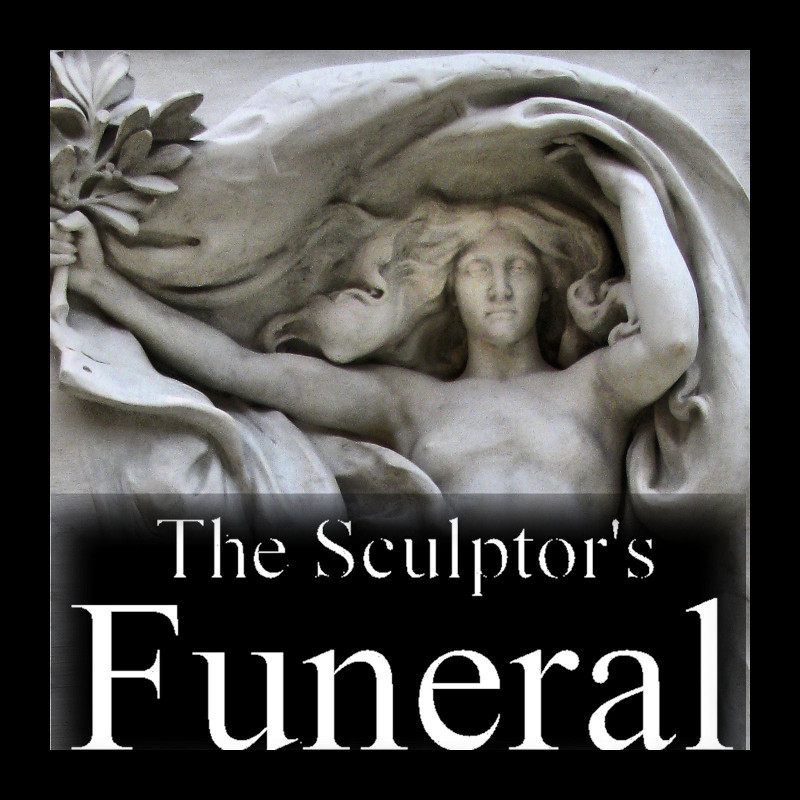 Welcome to the podcast!
Welcome to the podcast! Welcome to the podcast!
Welcome to the podcast!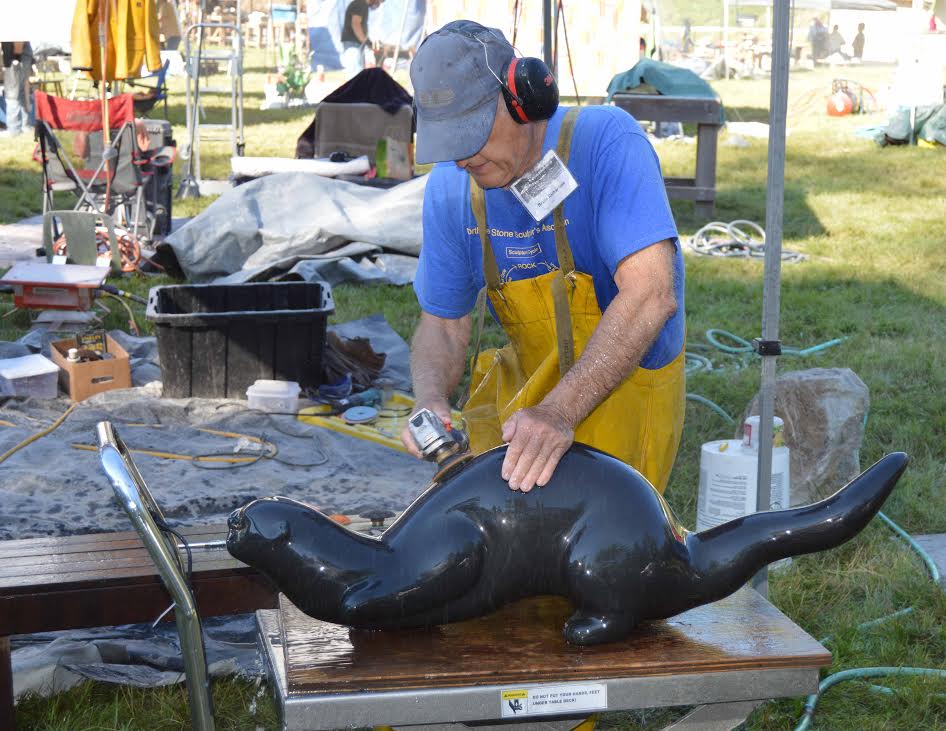
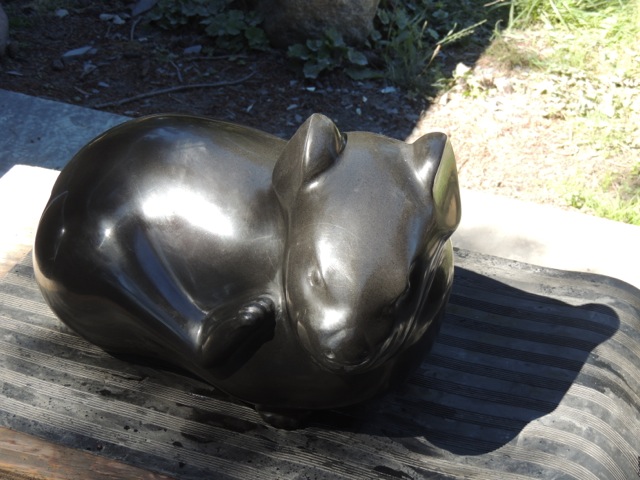
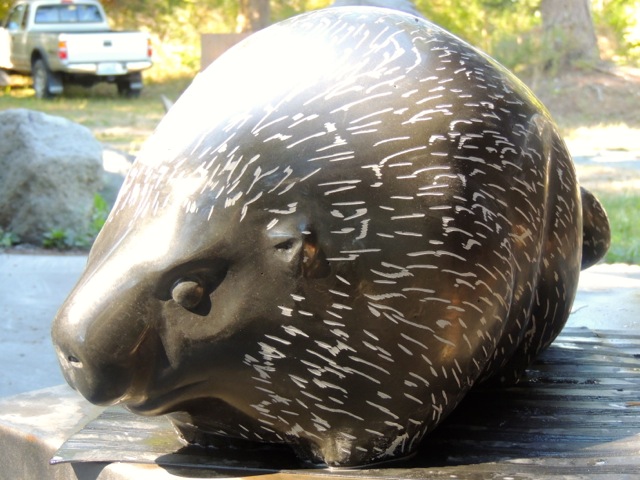 With basalt the learning curve is steep. How much detail is realistically achievable? Curves need to be polishable. Small projections aren’t a good idea. And then there was always that pushy muse in the background repeating, “Nothing ventured, nothing gained.”
With basalt the learning curve is steep. How much detail is realistically achievable? Curves need to be polishable. Small projections aren’t a good idea. And then there was always that pushy muse in the background repeating, “Nothing ventured, nothing gained.”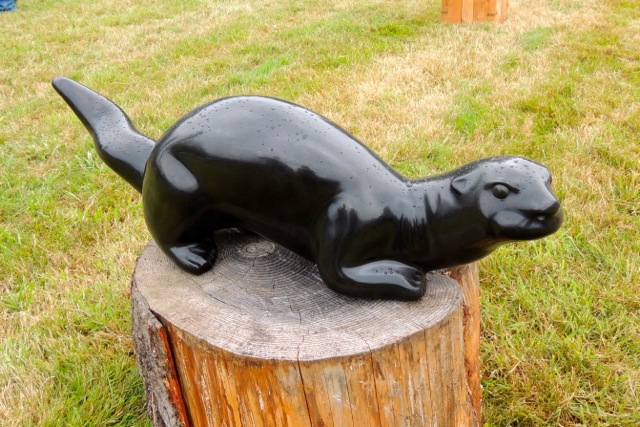 As I waited for the ferry back to Lopez Island on my way home that year, filled with wild excess energy from seven days with seventy other stoned fanatics gathered on “Planet Granite,” I noticed the black long necked cormorants drying themselves on the dock pilings. Wet, black, shiny and plastic! There had to be a way to find one in that other basalt column in the back of my truck that didn’t have a foot long neck and a narrow beak waiting to be snapped off by an unplanned encounter with a vacuum cleaner. Like otters, they are amazing contortionists and before long one showoff twisted his neck around to preen the back of his wing and I was a witness. The deal was sealed and the rest history …. and chips and dust and pools of water.
As I waited for the ferry back to Lopez Island on my way home that year, filled with wild excess energy from seven days with seventy other stoned fanatics gathered on “Planet Granite,” I noticed the black long necked cormorants drying themselves on the dock pilings. Wet, black, shiny and plastic! There had to be a way to find one in that other basalt column in the back of my truck that didn’t have a foot long neck and a narrow beak waiting to be snapped off by an unplanned encounter with a vacuum cleaner. Like otters, they are amazing contortionists and before long one showoff twisted his neck around to preen the back of his wing and I was a witness. The deal was sealed and the rest history …. and chips and dust and pools of water.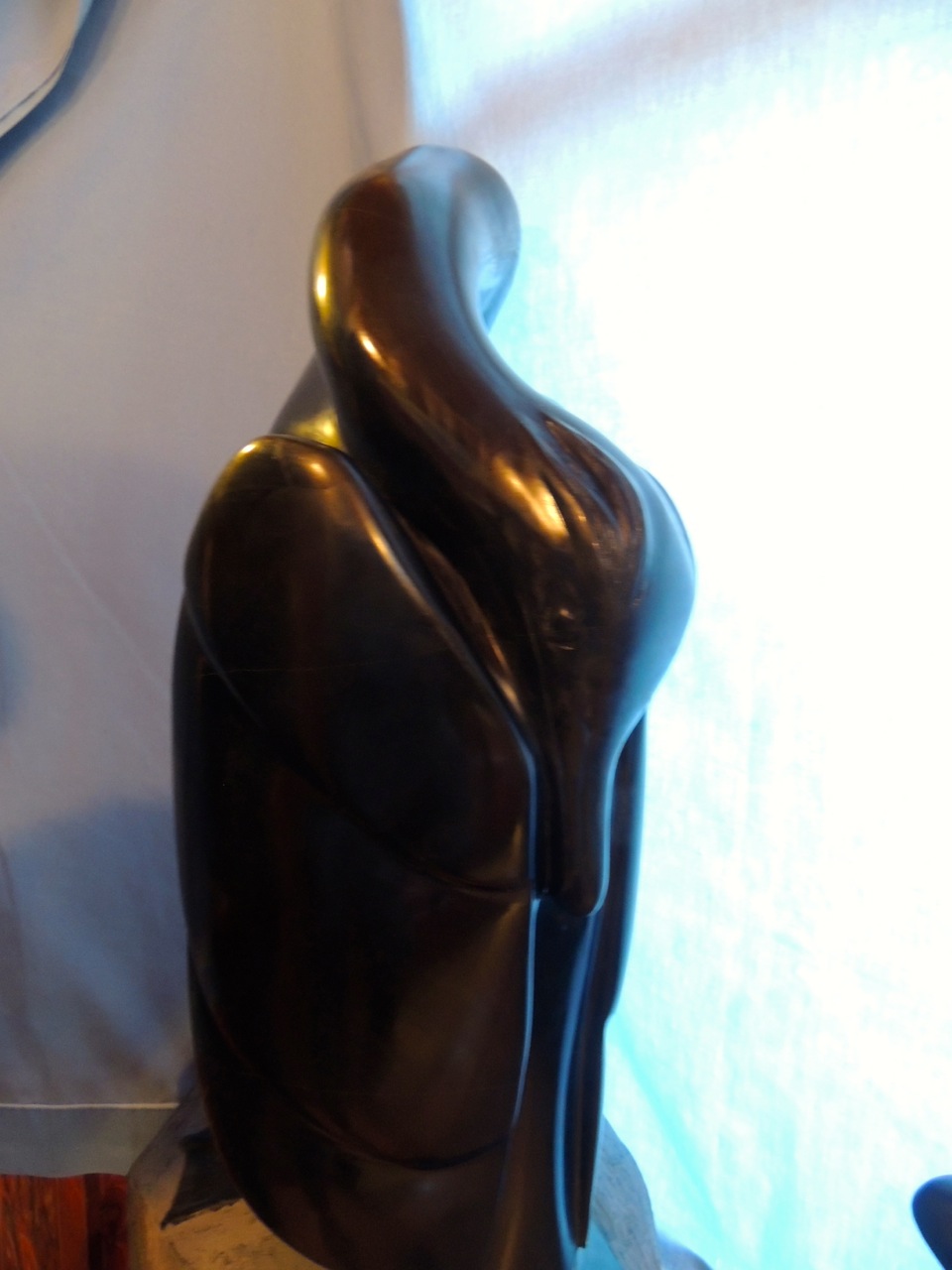
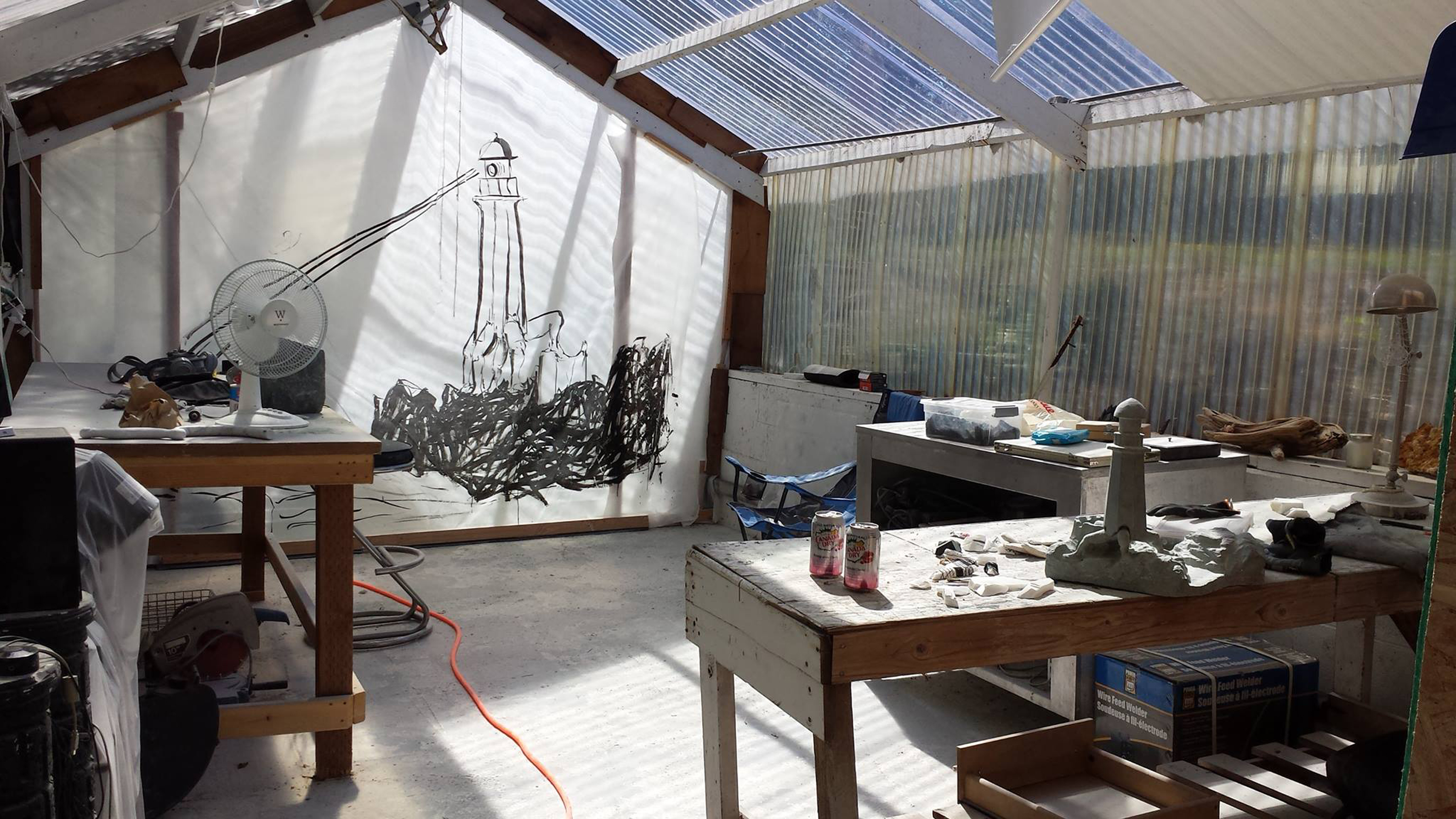
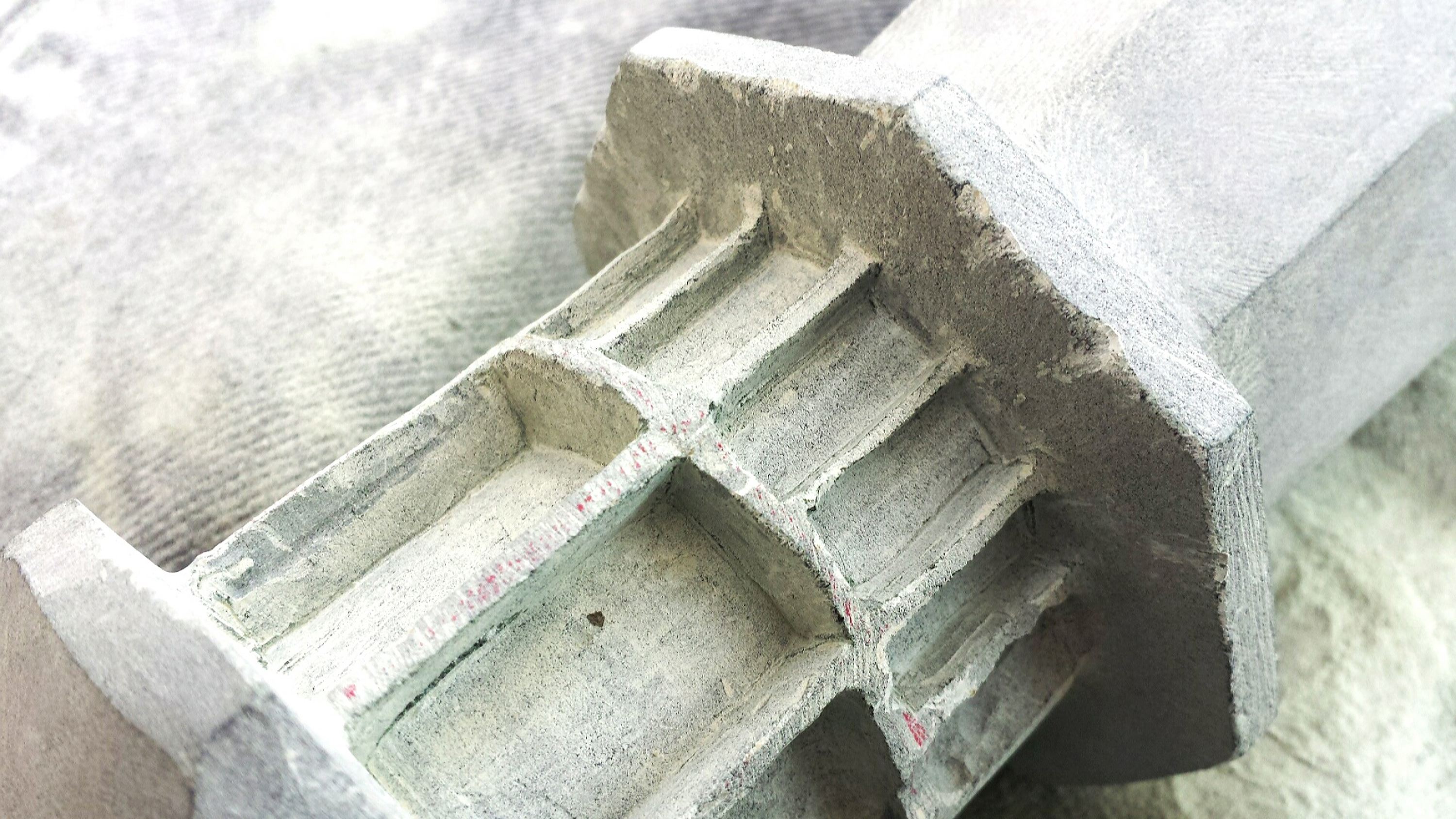
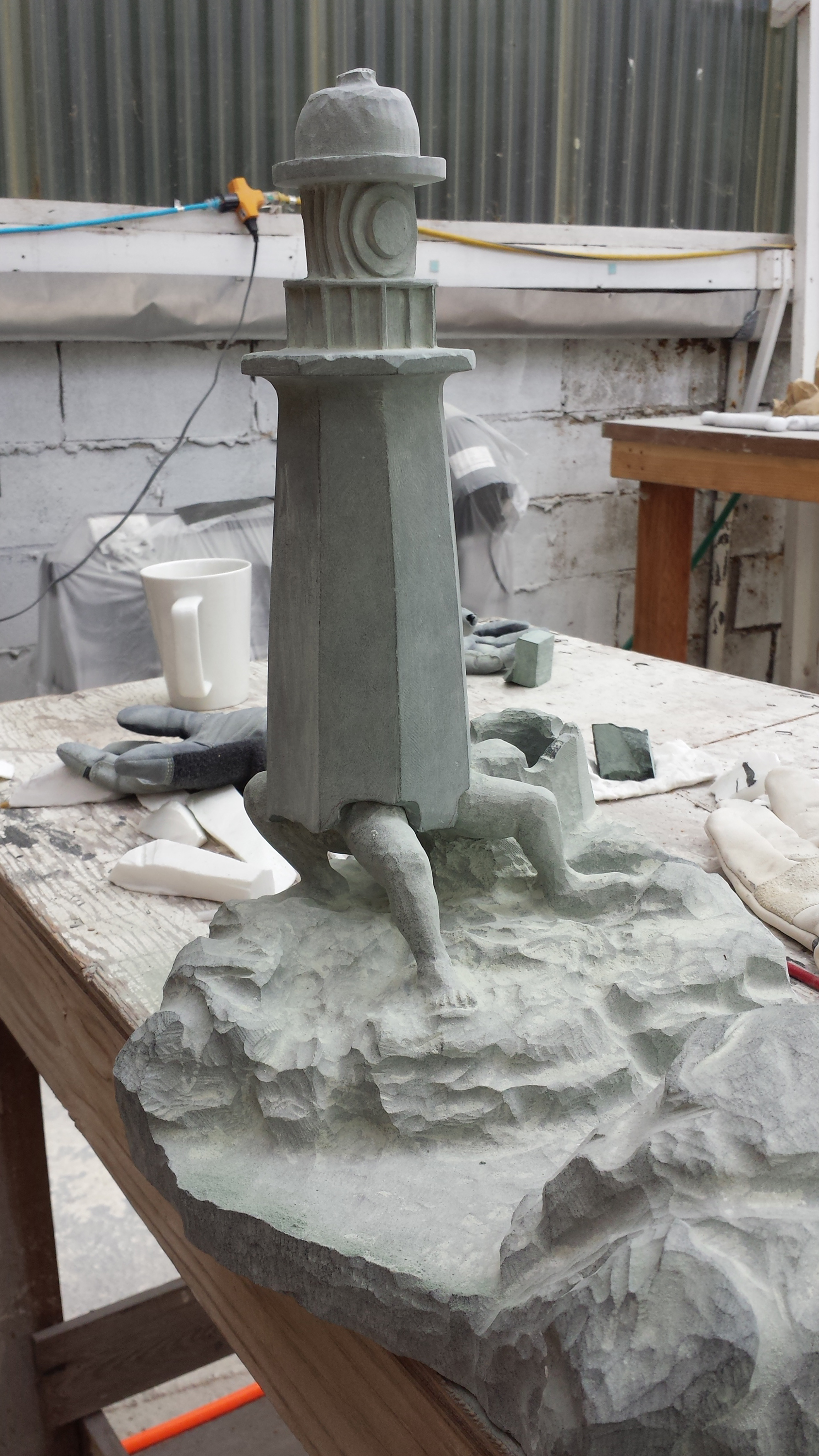 2015 found me wading in the river. I finally pushed off the foundation, relinquished the apartment and went peripatetic. Homeless. The day I found out that was to happen, the day after returning to my studio from Camp B, Rubble was cast as the foundation broke off entirely. A fit of ink projected the lighthouse onto a studio wall.
2015 found me wading in the river. I finally pushed off the foundation, relinquished the apartment and went peripatetic. Homeless. The day I found out that was to happen, the day after returning to my studio from Camp B, Rubble was cast as the foundation broke off entirely. A fit of ink projected the lighthouse onto a studio wall. I wanted to have the base before returning to Vashon, so I detoured for a few days to visit a friend on another island with a studio surrounded in forest. I took the lighthouse out into this eighth workspace to cut and laminate a solid base of old, repurposed mahogany. By now I was savoring the last drops of my homesickness. I still had no plan and no specific place to lay my head, but that didn't matter so much. One foot, a few toes, were still in the river, and the rest of me had pulled up onto a new land.
I wanted to have the base before returning to Vashon, so I detoured for a few days to visit a friend on another island with a studio surrounded in forest. I took the lighthouse out into this eighth workspace to cut and laminate a solid base of old, repurposed mahogany. By now I was savoring the last drops of my homesickness. I still had no plan and no specific place to lay my head, but that didn't matter so much. One foot, a few toes, were still in the river, and the rest of me had pulled up onto a new land.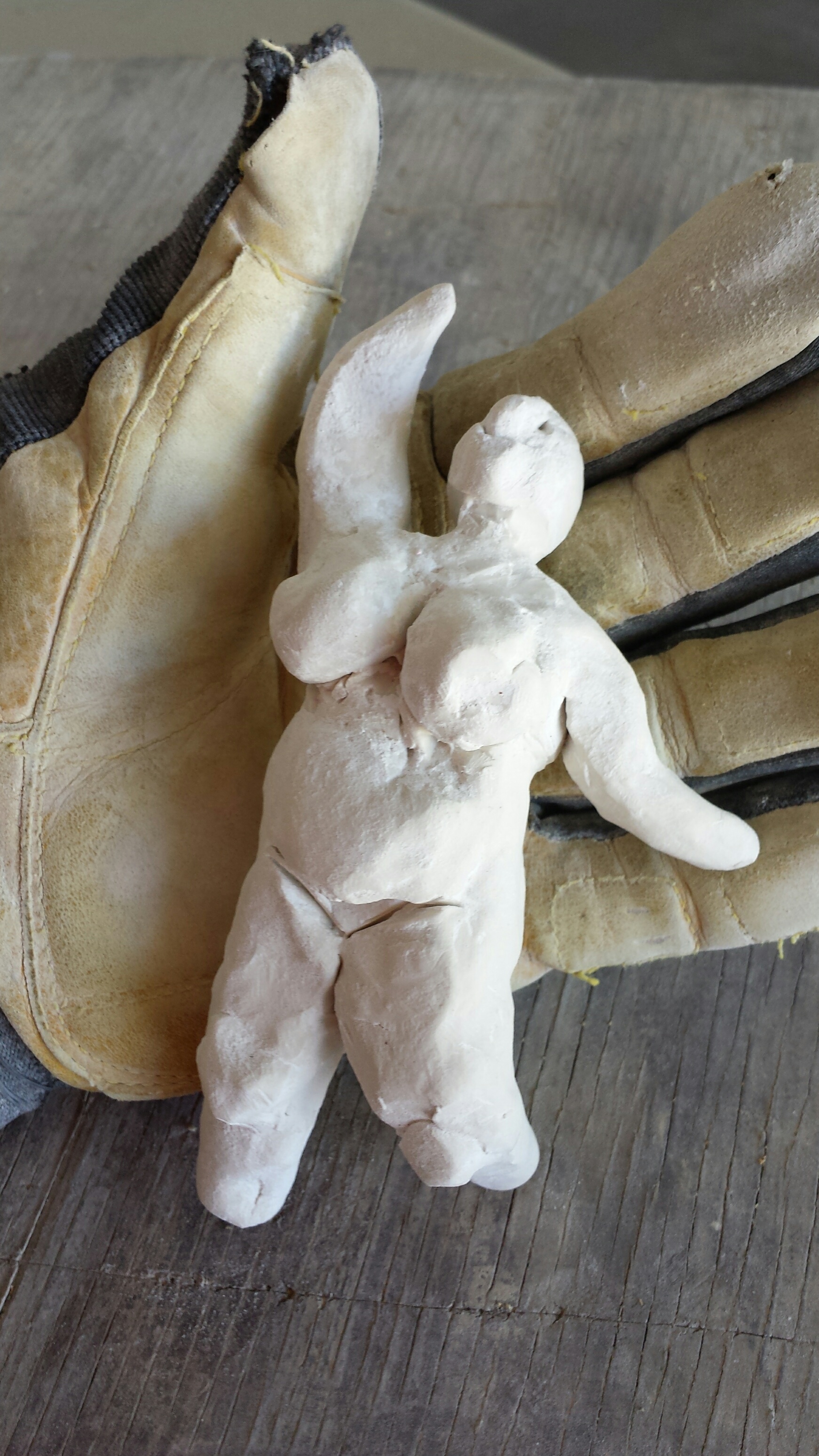
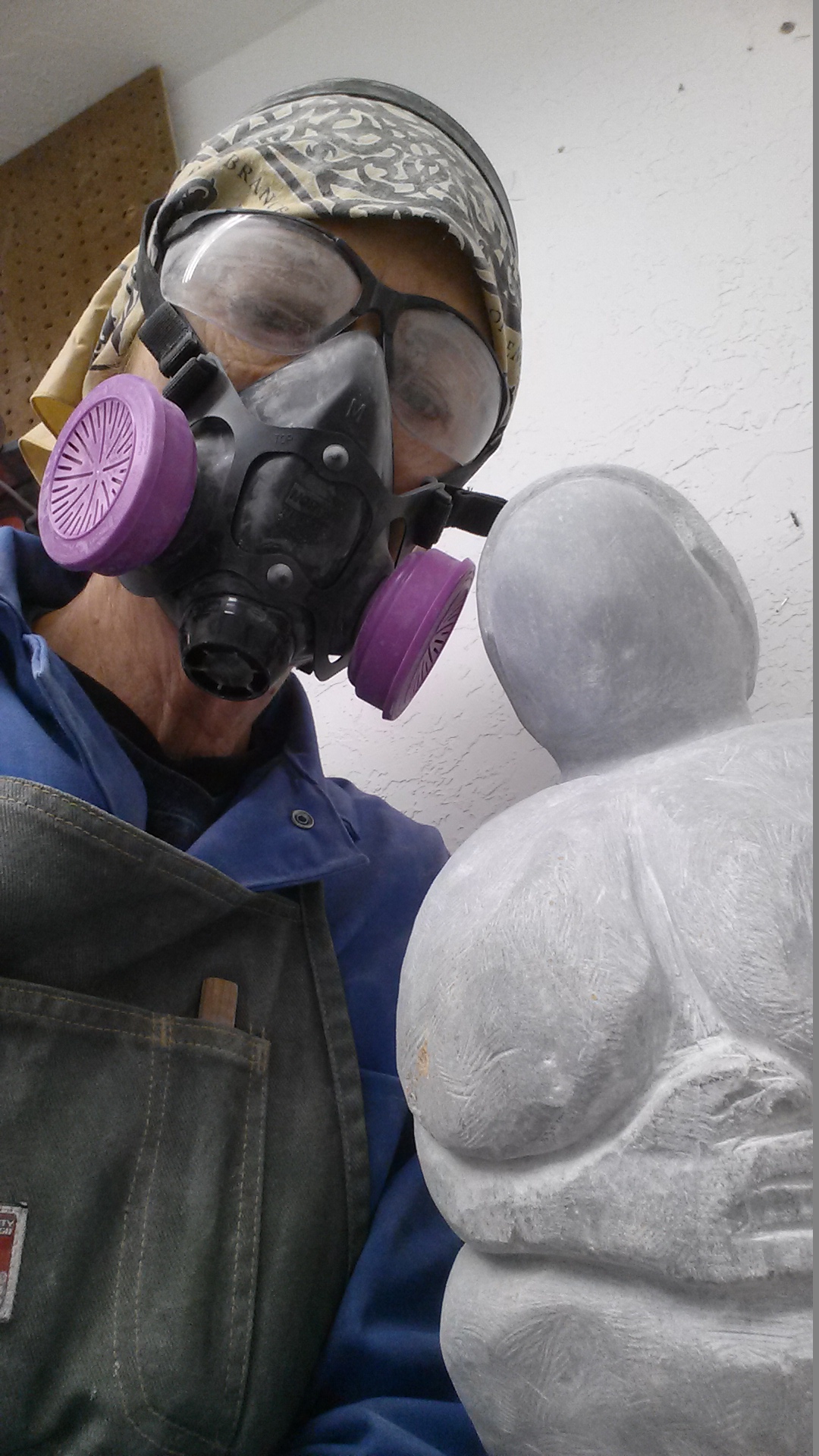 For an in depth critique of the show, go to Scotti Hill’s article in 15 Bytes e-magazine.
For an in depth critique of the show, go to Scotti Hill’s article in 15 Bytes e-magazine.Page from the Past...
Keith Philips: Tools of the Trade by Terry Slaton
Dressed as a 19th century instructor in a trade school he explained many things about the conditions when stone work was the major building method. Then he quick-changed into the garb of a turn-of-the-century stone cutter, or banker mason, with black coat, vest and derby, as a play on words. A banker mason worked on quarry blocks supported by big benches called "bankers", possibly from the French 'banquette', meaning bench. (Possibly not.) Lots and lots of tools were shown and demonstrated. My favorite was the pneumatic tool of choice of Scotsmen; Bagpipes! Keith pulled some from an un-toolbox-style case and proceeded to demonstrate them for us. Quite adequately, I might add.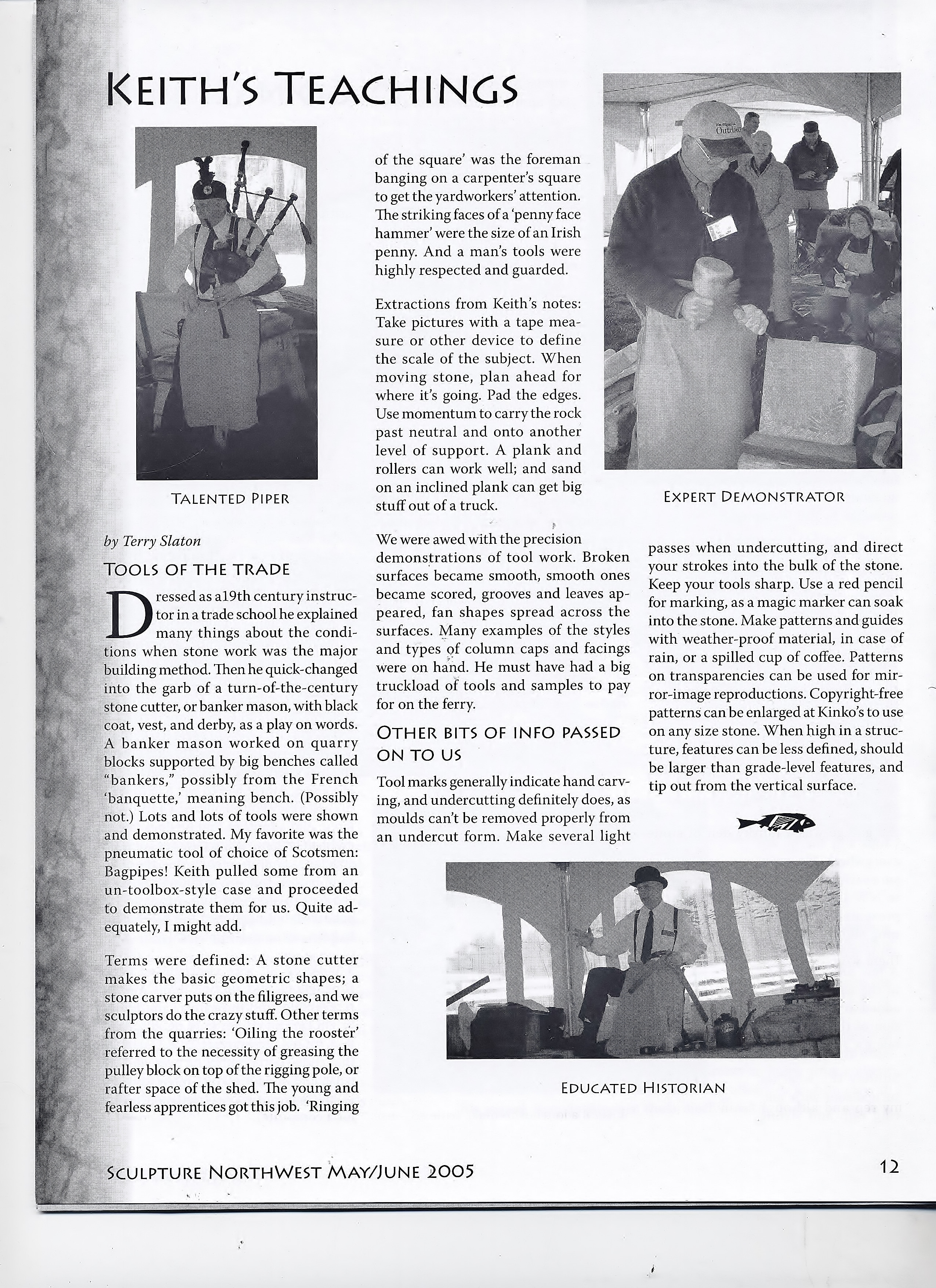
Terms were defined;
A stone cutter makes the basic geometric shapes;
A stone carver puts on the filigrees;
And we sculptors do the crazy stuff.
Other terms from the quarries:
'Oiling the rooster' referred to the necessity of greasing the pulley block on top of the rigging pole, or rafter space of the shed. The young and fearless apprentices got this job.
'Ringing of the square' was the foreman banging on a carpenter's square to get the yardworkers' attention.
The striking faces of a 'penny face hammer' were the size of an Irish penny. And a man's tools were highly respected and guarded.
Extractions from Keith's notes: Take pictures with a tape measure or other device to define the scale of the subject. When moving stone, plan ahead for where it's going. Pad the edges. Use momentum to carry the rock past neutral and onto another level of support. A plank and rollers can work well; and sand on an inclined plank can get big stuff out of a truck.
We were awed with the precision demonstrations of tool work. Broken surfaces become smooth, smooth ones became scored, grooves and leaves appeared, fan shapes spread across the surfaces. Many examples of the styles and types of column caps and facings were on hand. He must have had a big truckload of tools and samples to pay for on the ferry.
Other bits of info passed on to us
Tool marks generally indicate hand carving, and undercutting definitely does, as moulds can't be removed properly from an undercut form/ Make several light passes when undercutting, and direct your strokes into the bulk of the stone. Keep your tools sharp. Use a red pencil for marking, as magic market can soak into the stone. Make patterns and guides with weather proof material, in case of rain, or a spilled cup of coffee. Patterns on transparencies can be used for mirror-image reproductions. Copyright-free patterns can be enlarged at Kinko's to use on any sized stone. When high in a structure, features can be less defined, should be larger than grade-level features, and tip out from the vertical surface.
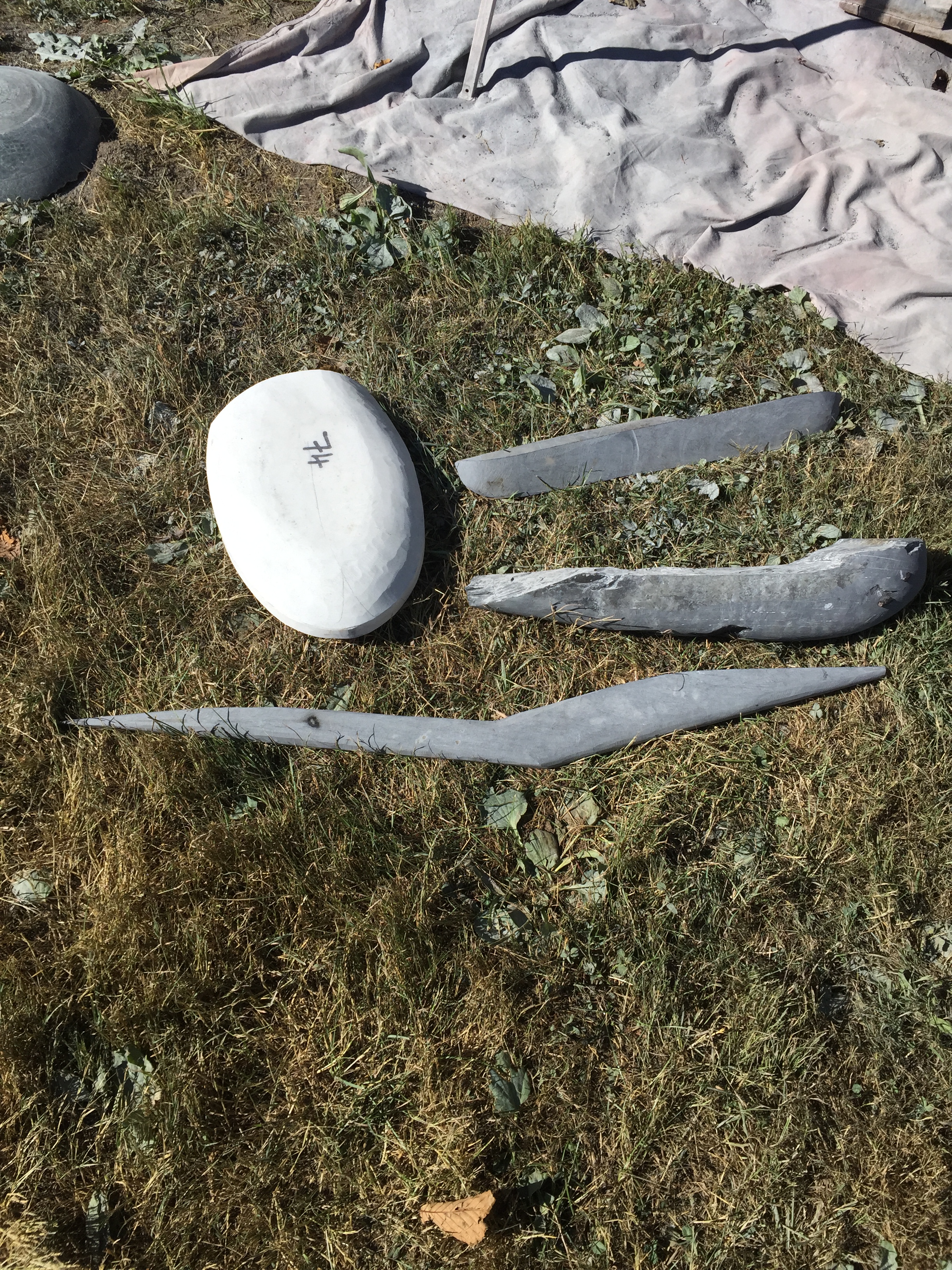
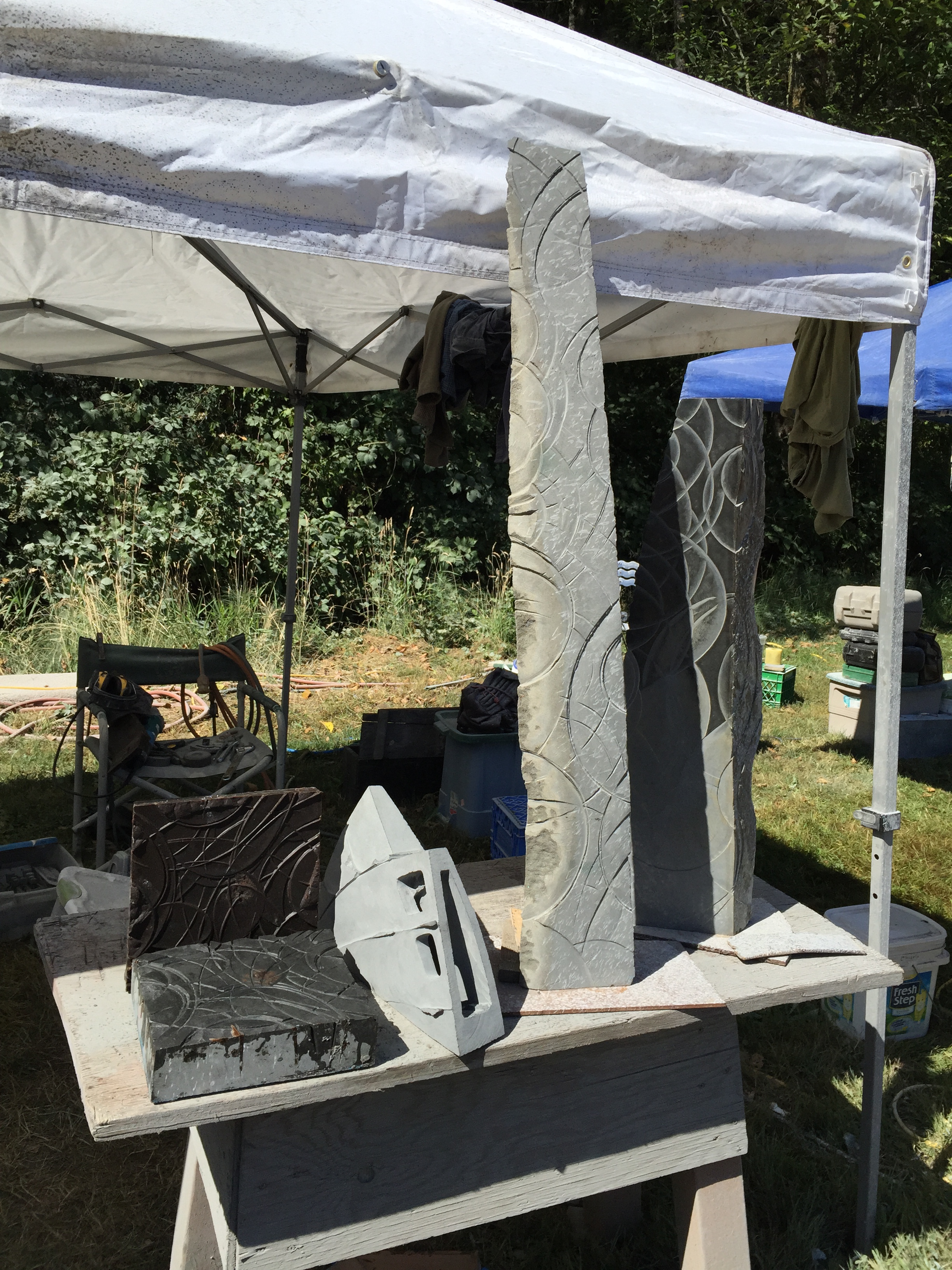 In discussing the idea with Tom Small he suggested that it be 5 pieces in 5 days for each sculptor, and I thought that was a better challenge. That would also allow me to rough out a piece and let it sit for at least a couple days so that I could look at it and think about the necessary refinements without the pressure to polish a form that wasn’t necessarily ready. I was also excited about loose-form sketching in stone.
In discussing the idea with Tom Small he suggested that it be 5 pieces in 5 days for each sculptor, and I thought that was a better challenge. That would also allow me to rough out a piece and let it sit for at least a couple days so that I could look at it and think about the necessary refinements without the pressure to polish a form that wasn’t necessarily ready. I was also excited about loose-form sketching in stone.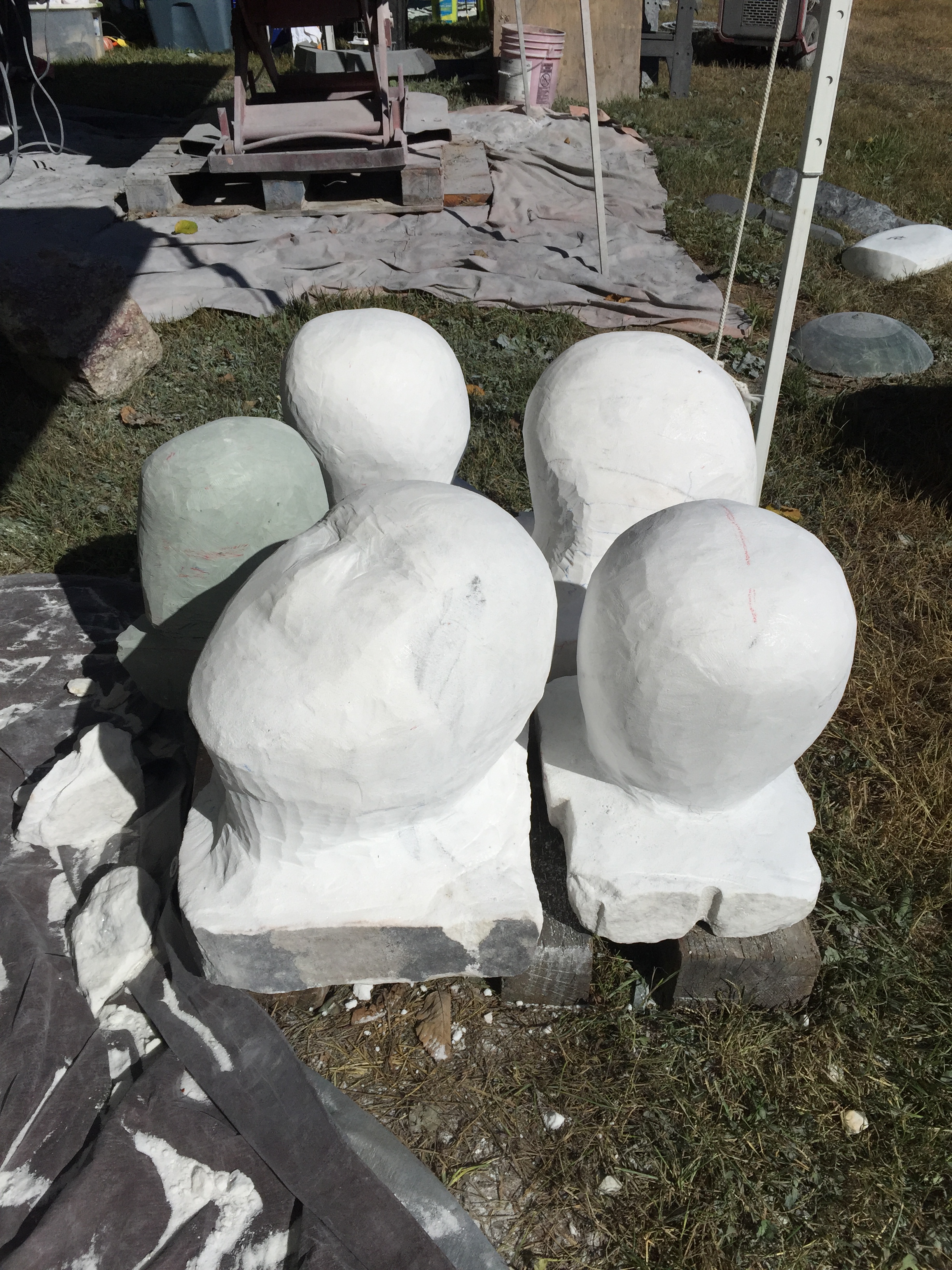
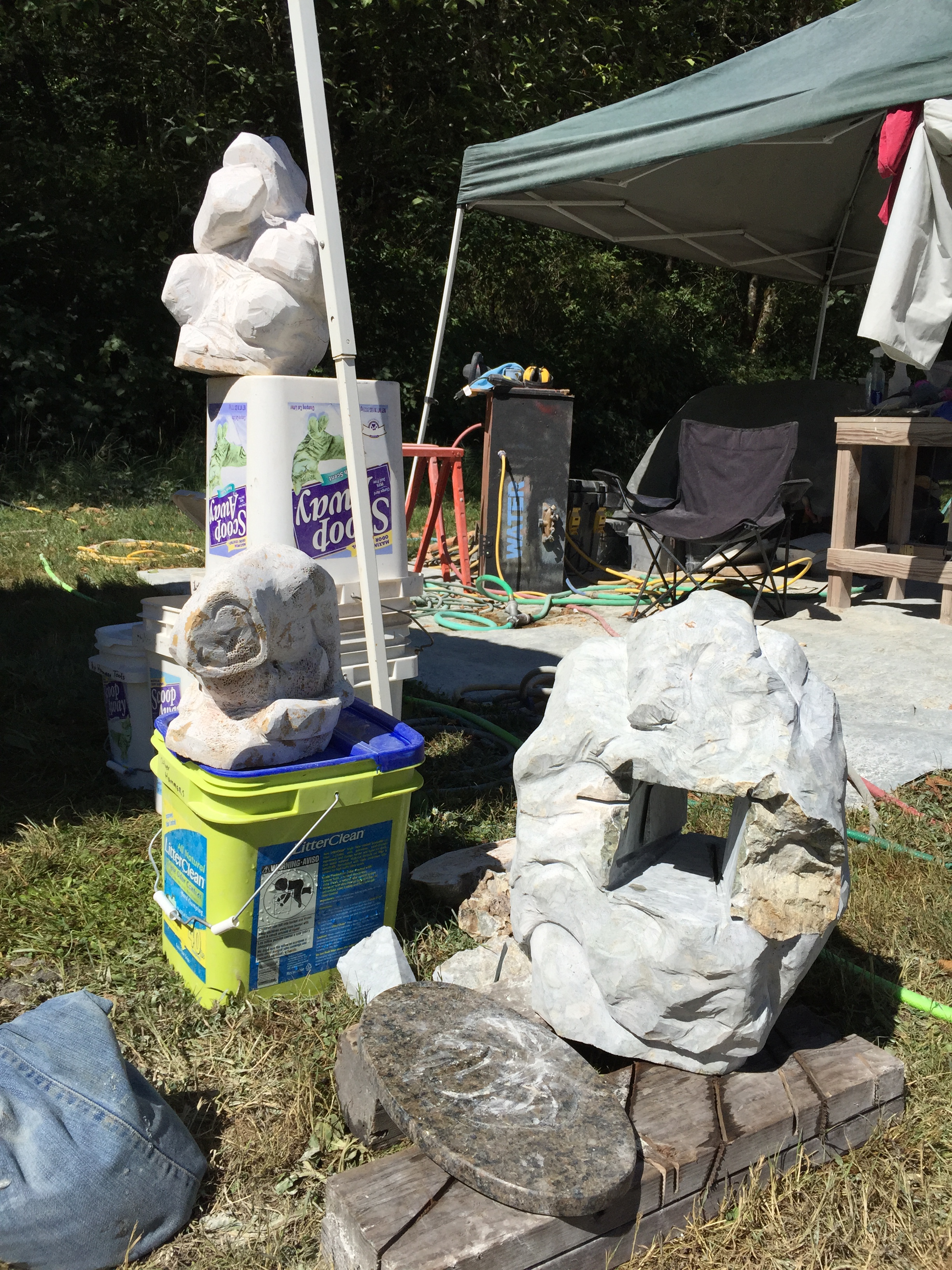 Tom Francis wanted the opportunity to work with several different types of stone. Tom warmed up with stones that he was comfortable with, but then dove into some conglomerates and other challenging stones that he wanted to try. The shortened time format required him to dive into the stones and just,“do it”.
Tom Francis wanted the opportunity to work with several different types of stone. Tom warmed up with stones that he was comfortable with, but then dove into some conglomerates and other challenging stones that he wanted to try. The shortened time format required him to dive into the stones and just,“do it”.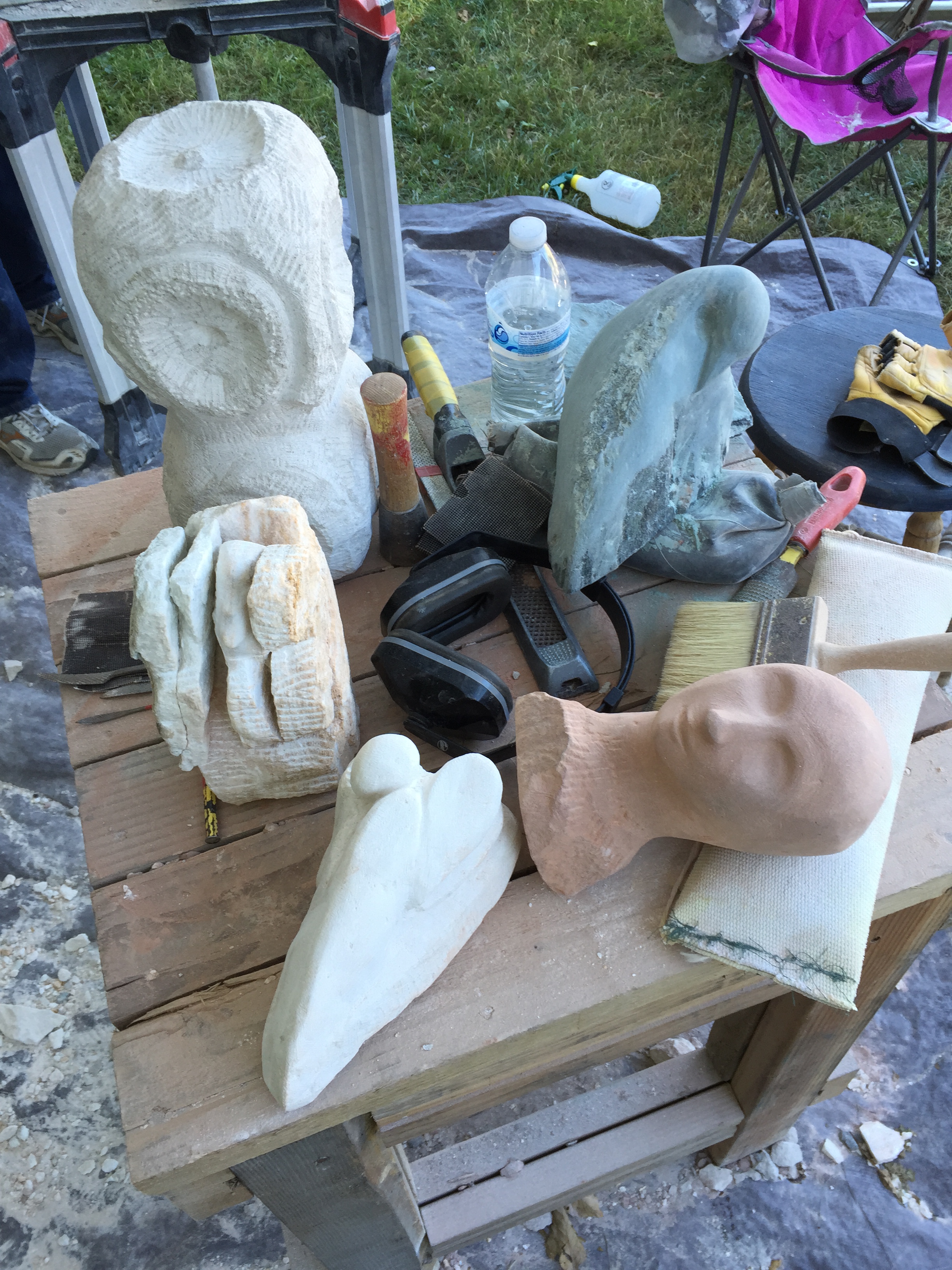 Therese Kingsbury was a first-time stone sculptor. She jumped into carving with great gusto, making five pieces over the course of the symposium. Therese did not start out to achieve five pieces, but just kept carving until the first one was done and then started the second. It was curiosity about how to carve combined with a desire to keep going until completion.
Therese Kingsbury was a first-time stone sculptor. She jumped into carving with great gusto, making five pieces over the course of the symposium. Therese did not start out to achieve five pieces, but just kept carving until the first one was done and then started the second. It was curiosity about how to carve combined with a desire to keep going until completion.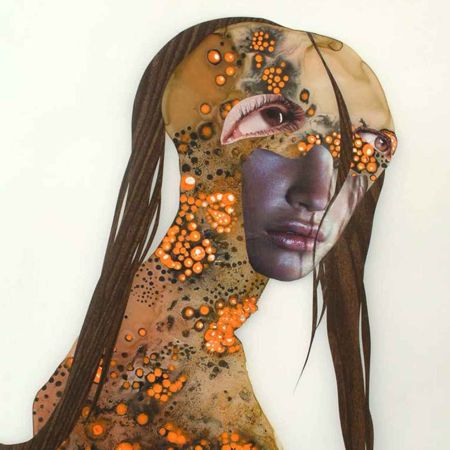
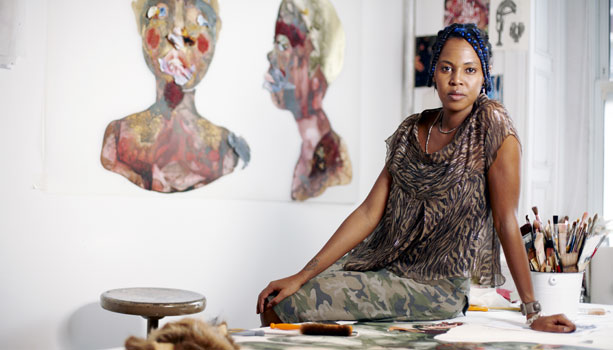 About 50 other countries have applied for their own exhibition space, called a pavilion. The East African country of Kenya hosted its first pavilion in 2013 and plans to host another this year, featuring mainly Chinese nationals. None of them have apparently ever been to Africa or reference it in their work.
About 50 other countries have applied for their own exhibition space, called a pavilion. The East African country of Kenya hosted its first pavilion in 2013 and plans to host another this year, featuring mainly Chinese nationals. None of them have apparently ever been to Africa or reference it in their work.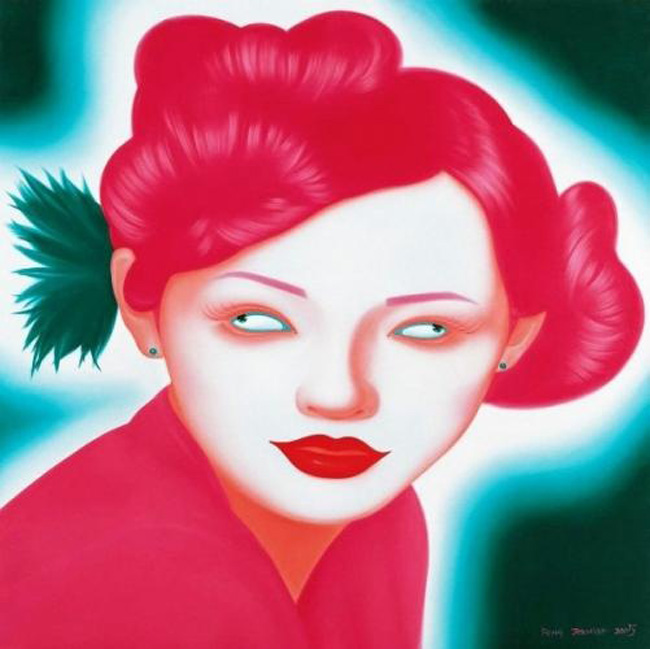
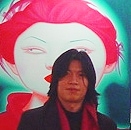
 I sat down with Tanzini last week in a cafe in Nairobi to understand how the pavilion had come to be. He explained that if not for his efforts, Kenya would not have any pavilion at all.
I sat down with Tanzini last week in a cafe in Nairobi to understand how the pavilion had come to be. He explained that if not for his efforts, Kenya would not have any pavilion at all.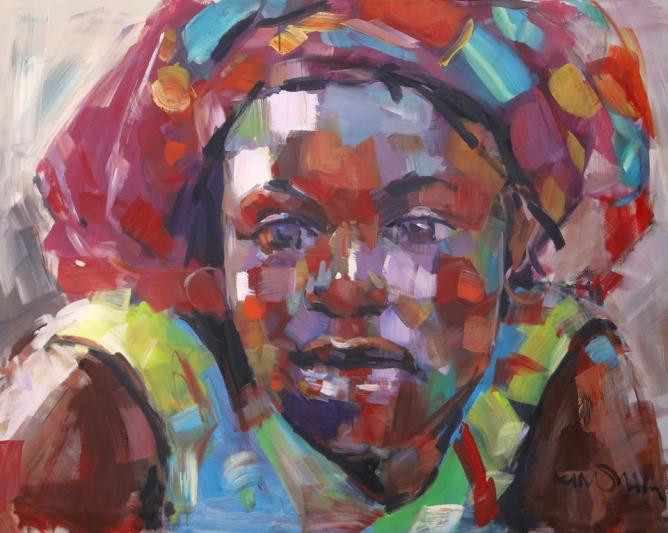
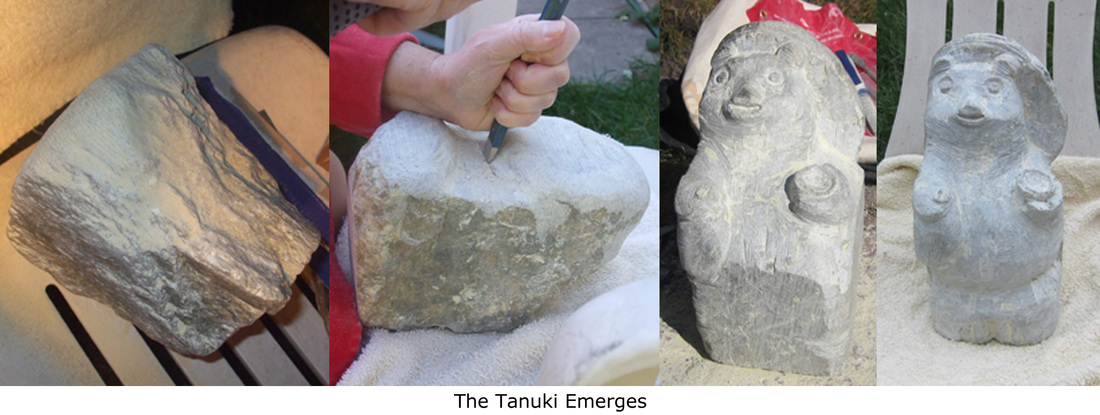 And I thought I was speaking the truth. I can't draw to save my life; the light-and-shadow-play of painting and pastel-work eludes me; and while I'm proficient at thread-craft, I can't work without a pattern, so my thread-work is really an expression of someone else's artistry. Creating art by putting materials together – pencils, charcoal, pastels or paints onto paper, board or canvas – is just beyond me. Despite all my efforts, even with the helpful teaching of others, I can't do it; I've no instinct for it. Artistic ability? Feh. Not me.
And I thought I was speaking the truth. I can't draw to save my life; the light-and-shadow-play of painting and pastel-work eludes me; and while I'm proficient at thread-craft, I can't work without a pattern, so my thread-work is really an expression of someone else's artistry. Creating art by putting materials together – pencils, charcoal, pastels or paints onto paper, board or canvas – is just beyond me. Despite all my efforts, even with the helpful teaching of others, I can't do it; I've no instinct for it. Artistic ability? Feh. Not me.